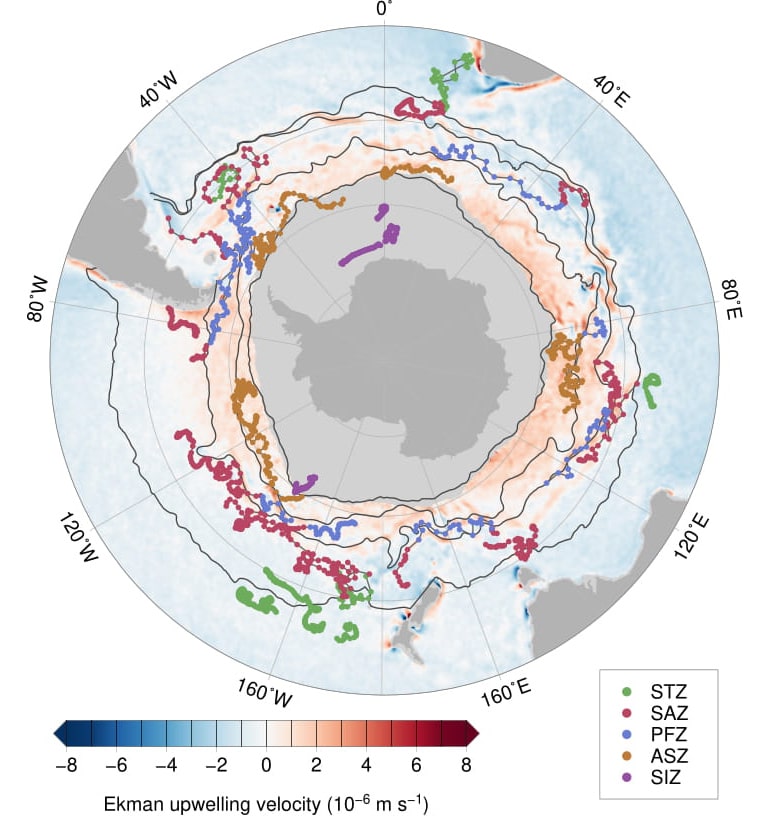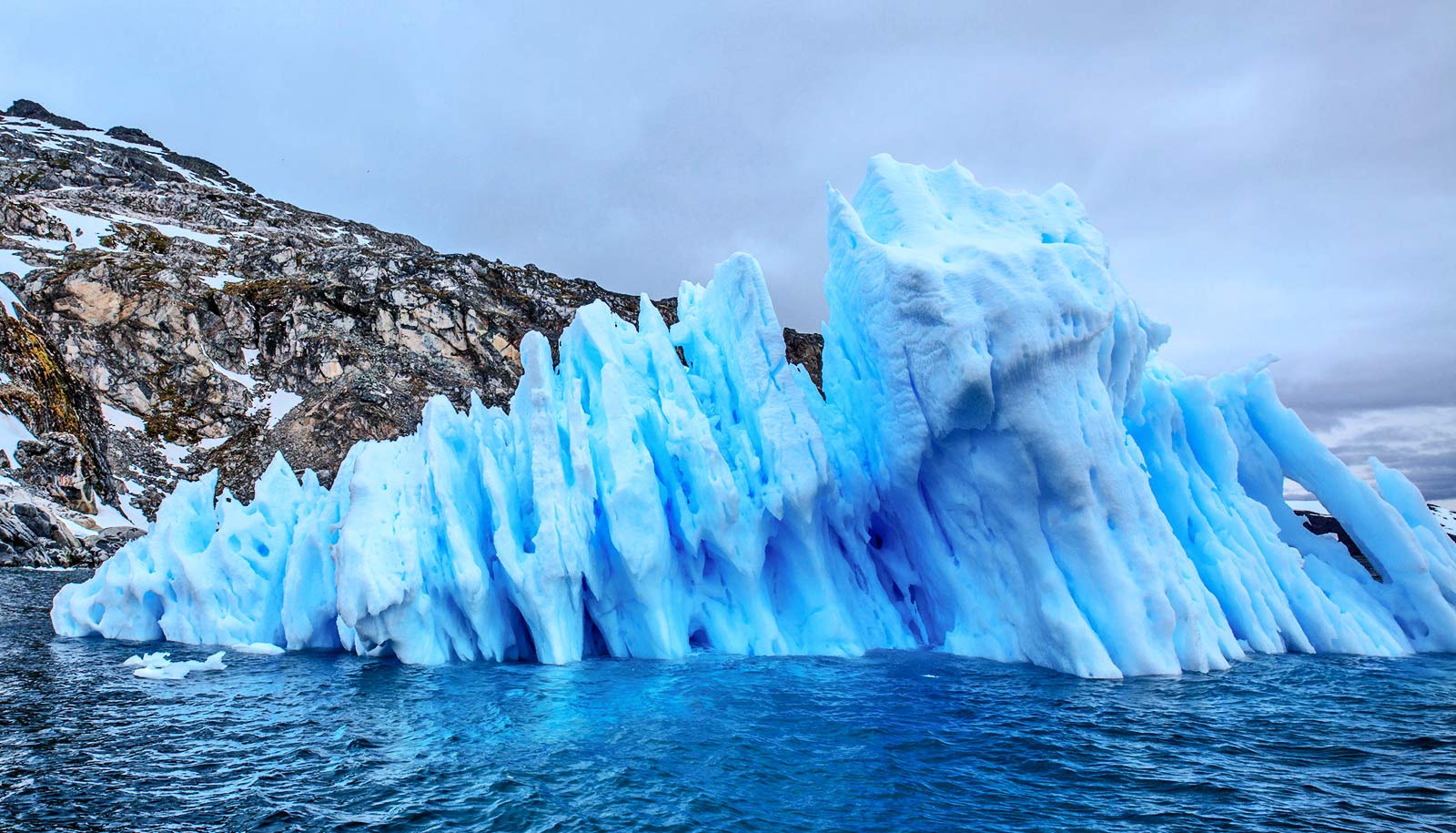Open water nearest the sea ice surrounding Antarctica releases significantly more carbon dioxide in winter than previously thought, according to a new study.
Researchers looked at data from more than 100 oceanic floats diving and drifting in the Southern Ocean over past winters. The place and season remains very poorly studied, despite its important role in regulating the global climate, they say.
“These results came as a really big surprise, because previous studies found that the Southern Ocean was absorbing a lot of carbon dioxide,” says Alison Gray, an assistant professor of oceanography at the University of Washington and lead author of the paper in Geophysical Research Letters.
“If that’s not true, as these data suggest, then it means we need to rethink the Southern Ocean’s role in the carbon cycle and in the climate.”

Stormy winters
“Our observations have important implications for our understanding of the global carbon cycle,” says coauthor Jorge Sarmiento, director of the Southern Ocean Carbon and Climate Observations and Modeling (SOCCOM) project based at Princeton University, which gathered the data. “We find that the Southern Ocean is currently near neutral with respect to removal of carbon from the atmosphere, contrary to previous studies which suggest there is a large uptake of carbon by the Southern Ocean. These results can be reconciled if there is a corresponding unobserved carbon uptake waiting to be discovered somewhere else in the ocean.”
Previous winter measurements in the region had come mainly from ships traveling across Drake Passage to supply Antarctic research stations—but those data were few and far between.
“After four years of SOCCOM, the vast majority of information about the chemistry of the Southern Ocean is coming from these floats,” Gray says. “We have more measurements from the past few years than all the decades that came before.”
There are reasons so few previous winter measurements exist. Storms in Antarctica are some of the fiercest on the planet. In winter, the circumpolar current and winds have no barrier to ripping around the continent. The average storm lasts four days, Gray says and the average time between storms is seven days.
“In the winter it’s very stormy, and the winds are extremely strong, and it’s dark,” Gray says. “It would be a pretty unhappy place to be on a ship.”
Water from the deep
The SOCCOM project launched because this region also plays a unique role in the climate. It is one of the few places where water that has spent centuries in the deep ocean travels all the way up to the surface to rejoin the surface currents and connect with the atmosphere.
Carbon atoms move between rocks, rivers, plants, oceans, and other sources in a planet-scale life cycle. Learning the rate of these various transfers helps to predict the long-term levels of carbon dioxide, a molecule released by burning fossil fuels that, when it accumulates in the atmosphere, traps heat.
The new observations come from floating instruments that drift with the currents and can control their buoyancy to collect observations at different depths. The instruments dive down to 1 kilometer and float with the currents for nine days. Next they drop even farther, to 2 kilometers, and then rise back to the surface while measuring water properties. After surfacing they beam their observations back to shore via satellite.
Unlike the more common Argo floats, which only measure ocean temperature and salinity, the SOCCOM floats also monitor dissolved oxygen, nitrogen and pH. The new paper uses the pH measurements to calculate the amount of dissolved carbon dioxide, and then uses that to figure out how strongly the water is absorbing or emitting carbon dioxide to the atmosphere.
Outgassing
Looking at circles of increasing distance from the South Pole, the authors find that in winter the open water next to the sea-ice covered waters around Antarctica is releasing significantly more carbon dioxide than expected to the atmosphere.
“It’s not surprising that the water in this region is outgassing, because the deep water is exceptionally rich in carbon,” Gray says. “But we underestimated the magnitude of the outgassing because we had so little data from the winter months. That means the Southern Ocean isn’t absorbing as much carbon as we thought.”
The study analyzes data collected by 35 floats between 2014 and 2017. Gray is now analyzing newer data from more instruments to identify seasonal or multiyear trends, where the patterns might change from one year to the next.
“There is definitely strong variability on decadal scales in the Southern Ocean,” Gray says. “And the models are really all over the place in this region. The SOCCOM floats are now providing data at times and places where before we had virtually nothing, and that is invaluable for constraining the models and understanding these trends.”
Obtaining this kind of data is extremely difficult to do in the Southern Ocean, which is among the world’s most turbulent bodies of water, yet at the same time is vital to building a comprehensive global picture of how atmospheric carbon dioxide interacts with the polar oceans.
“Antarctic waters, until now, have been a data-poor region for these kinds of measurements,” says Peter Milne, program manager for ocean and atmospheric science at the NSF Office of Polar Programs. “SOCCOM, using technologies that previously were unavailable to researchers, already is proving its worth by gathering information that otherwise would remain largely unobtainable.”
NSF’s Office of Polar Programs manages the US Antarctic Program, which coordinates all US research on the southernmost continent. Additional coauthors are from the University of Washington, the University of Arizona, Princeton University, Oregon State University, the Monterey Bay Aquarium Research Institute, Scripps Institution of Oceanography, and the National Oceanic and Atmospheric Administration.
The National Science Foundation, through its Office of Polar Programs, funded the effort to place dozens of floating robots to monitor the water around Antarctica and learn how it functions in the global climate system. NOAA and NASA also provided funding.
Source: University of Washington


